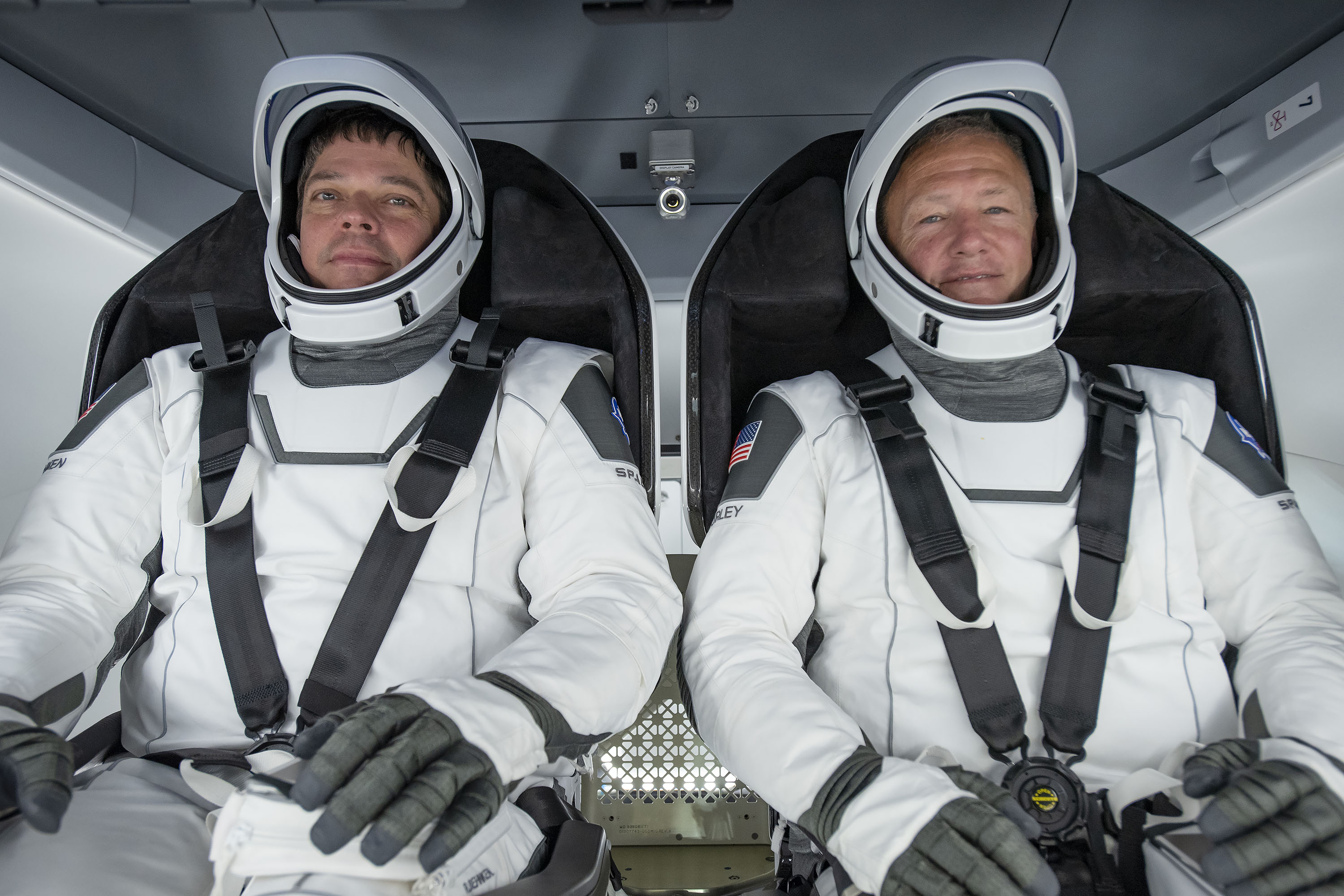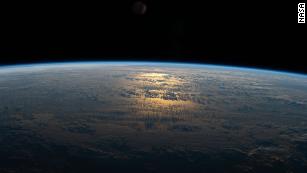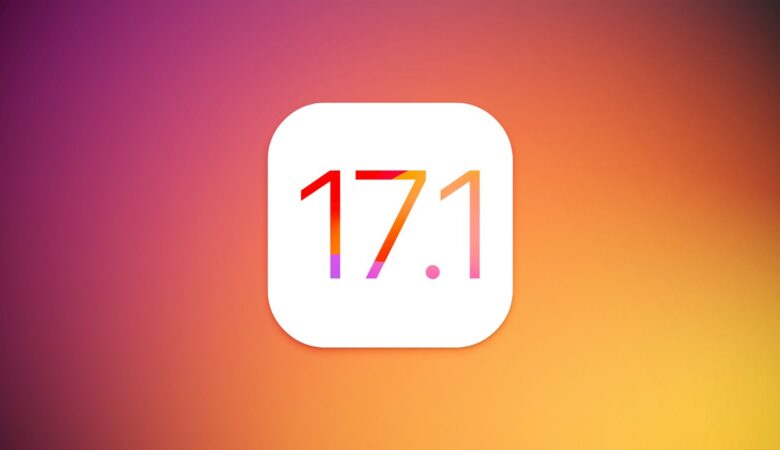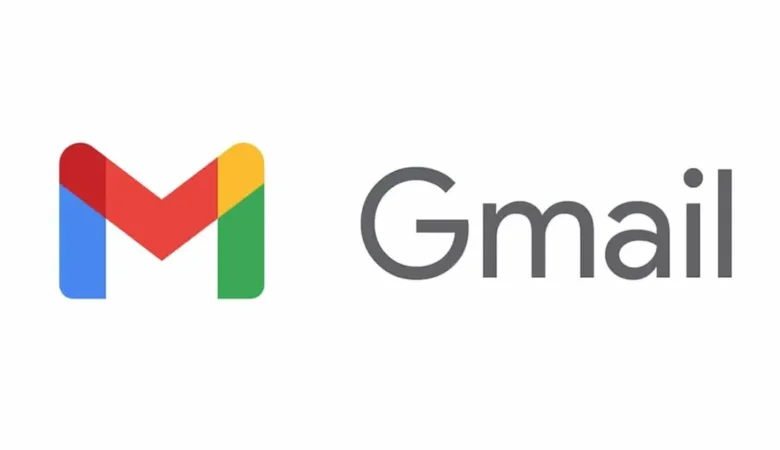Two American astronauts have splashed down, as the first commercial crewed mission to the International Space Station returned to Earth.
The SpaceX Dragon Capsule carrying Doug Hurley and Bob Behnken came down in the Gulf of Mexico just south of Pensacola on Florida’s Gulf coast. A recovery vessel moved in to pick up the vehicle and extricate the men.
The touchdown marks the first crewed US water landing since the final outing of an Apollo command module 45 years ago.
Hurley’s and Behnken’s capsule hit the water at about 14:48 EDT (19:48 BST; 18:48 GMT).
The Dragon Crew
The Crew Dragon vehicle fired up its engines and safely plunged back through the Earth’s thick atmosphere on Sunday afternoon before deploying parachutes and slowing the vehicle down for its target landing off the coast of Florida.
Their mission to the International Space Station marked the first crewed spaceflight to launch from the United States since the Space Shuttle program retired in 2011. It was also the first time in history that a commercially developed spacecraft carried humans into Earth’s orbit.
The Splash Down
Mission control dispatched a humorous welcome to the astronauts: “Thank you for flying SpaceX.”

A cute remark, but also a sign of what’s to come. Hurley and Behnken are NASA astronauts, but on this mission, they were also SpaceX customers, their tickets covered by their employer. Because although NASA helped fund SpaceX’s development of the astronaut capsule, the agency doesn’t have exclusive rights to it, and SpaceX doesn’t plan to transport only astronauts. SpaceX is already in talks with the actor Tom Cruise about a trip to the ISS to film a movie.
Cruise could probably shoot scenes right inside the Dragon capsule itself; the interior is futuristic-looking and sleek, all black and white, with a triptych of touch screens.
Unlike NASA’s early cramped capsules and overstuffed control panels, there’s plenty of legroom. Since SpaceX’s founding, Musk has promised that traveling by a rocket would become as routine as flying on a plane. “Space is the new air,” he tweeted yesterday after Hurley and Behnken returned.
Hurley and Behnken made their first post-splashdown public appearance after they were shuttled by helicopter, then airplane, to Houston, Texas, where the astronauts greeted their families.
The men sat to address the public during a media event streamed on NASA TV: “We’re not gonna stand right now,” Hurley told an audience at a landing strip near Johnson Space Center.

“For those of you who have done this before,” he said, referring to the arduous trip home from space, “you know, it’s not pleasant standing for a few hours after you get back.”
Behnken also thanked the leaders of NASA’s Commercial Crew Program, including Kathy Lueders, the longtime program head who was recently promoted to NASA’s head of human spaceflight. He also thanked SpaceX CEO Elon Musk, who flew into Houston to greet the astronauts after watching their return to Earth from SpaceX’s mission control in Hawthorne, California.
SpaceX’s Elon Musk’s Remarks
A visibly emotional Musk later remarked, “this is the result of an incredible, incredible amount of work from people at SpaceX, people at NASA,” Musk said.”This has been 18 years to, to finally fly,” he said, referring to the 18 years of SpaceX’s operation, during which it has flown dozens of satellites to orbit, but never humans.
The successful return of two NASA astronauts aboard a SpaceX capsule marked the culmination of a decade-long, and occasionally contentious, partnership between the space agency and Musk’s hard-charging rocket company.
The Historic Completion Of The Mission
The touchdown marks the first crewed US water landing since the final outing of an Apollo command module 45 years ago.
Hurley’s and Behnken’s capsule hit the water at about 14:48 EDT (19:48 BST; 18:48 GMT).
The sight of the vehicle’s four main parachutes floating down over the Gulf of Mexico was confirmation the spacecraft had survived its fiery descent through the atmosphere.
The parachutes then slowed the capsule from about 350mph (560km/h) to just roughly 15mph (7m/s) at splashdown.

Private boats which came close to the Dragon were asked to leave amid concern over hazardous chemicals venting from the capsule’s propulsion system.
Nasa administrator Jim Bridenstine said the presence of the boats “was not what we were anticipating”.
“What is not common is having passersby approach the vehicle close range with nitrogen tetroxide in the atmosphere; that’s not something that is good,” he said. “And we need to make sure that we’re warning people not to get close to the spacecraft in the future.”
Photos of the boats were shared on social media.
“It’s truly our honour and privilege,” said Hurley as the astronauts arrived home.
The men were checked over by medical staff before being flown to shore by helicopter.
Good News For The Private Sector
The successful end to the crew’s mission initiates a new era for the American space agency.
All its human transport needs just above the Earth will in future be purchased from private companies, such as SpaceX.
The government agency says contracting out to service providers in this way will save it billions of dollars that can be diverted to getting astronauts to the Moon, as part of its Artemis programme, and afterwards to Mars.
The Dragon capsule launched to the space station at the end of May on a Falcon 9 rocket, also supplied by SpaceX.
Hurley’s and Behnken’s mission served as an end-to-end demonstration of the astronaut “taxi service” the company, owned by tech entrepreneur Elon Musk, will be selling to Nasa from now on.
The Boeing corporation is also developing a crew capsule solution but has had to delay its introduction after encountering software problems on its Starliner vehicle.
What Is The Next Mission?
Another Crew Dragon spacecraft is already preparing to launch another mission, dubbed Crew-1, that will carry four more astronauts to the space station: NASA astronauts Victor Glover, Michael Hopkins, Shannon Walker and Japan’s Soichi Noguchi.
SpaceX also plans to refurbish Hurley and Behnken’s spacecraft, which is nicknamed Endeavour, to fly on another crewed mission in the spring of 2021.That trip will include Megan McArthur — Behnken’s wife and fellow astronaut — along with NASA’s Shane Kimbrough, Akihiko Hoshide with Japan’s JAXA space agency and Thomas Pesquet of the European Space Agency.NASA has been working to returning human spaceflight to US soil for nearly a decade: It lost that capability after retiring the Space Shuttle program in 2011. And at the time, few people at NASA expected Elon Musk’s scrappy rocket startup would be the organization that brought crewed launches back to US soil.NASA’s decision not to create its own replacement for the Shuttle — but to contract that task out to commercial companies — was hugely controversial in the early 2010s.
The program, called Commercial Crew, sought to spur innovation and encouraged corporations to compete to bring down costs. In 2014. NASA awarded two contracts: $4.2 billion to Boeing to build its Starliner vehicle, and $2.6 billion to SpaceX, which planned to create a crew worthy version of the Dragon spacecraft that was already flying cargo to and from the International Space Station.






Leave a Reply
You must be logged in to post a comment.